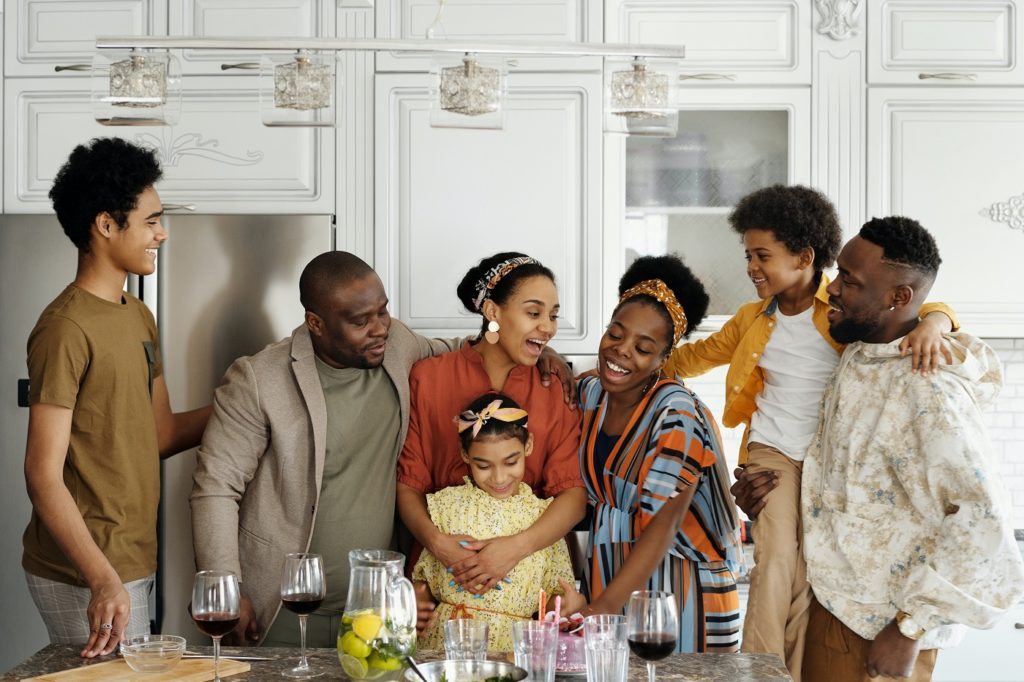How have kids done during the pandemic?
We have all heard anecdotes. Now we are finally starting to get some data.
Jean Twenge is a leading researcher studying trends in anxiety and depression among children and teens. She and her colleagues surveyed a demographically representative nationwide sample of 1,523 adolescents between May and July of this year. The results, recently released, are surprising.
For many years, the Centers for Disease Control and Prevention (CDC) has conducted periodic surveys of American adults to gauge the prevalence of anxiety and depression. When the pandemic hit the United States earlier this year, the leadership at the CDC recognized that it would be wise to increase the frequency of those surveys from once or twice a year to twice a month. The baseline rate of depressive symptoms among American adults in the CDC survey in 2019 was 6.5 percent. The most recent cycle of the CDC survey, which concluded November 23 and involved 61,254 adults nationwide, found a prevalence of 28.6 percent. That’s more than quadruple the 2019 baseline rate.
Start your day with Public Discourse
Sign up and get our daily essays sent straight to your inbox.The CDC page also allows you to break down the results by age. Those results show a trend: among adults, the older you are, the lower the risk of symptoms of depression. For the youngest adults, 18 to 29 years of age, 43.4 percent reported significant symptoms of depressive disorder for the cycle ending November 23. Among the oldest adults, 80 years and older, a comparatively lower rate of 18.2 percent reported significant symptoms of depressive disorder during the same time period.
Adolescents during the pandemic were actually less likely to report symptoms of depression compared with a comparable cross-section of adolescents two years previously, before the pandemic. What’s going on?
What about adolescents? If we extrapolate from the CDC results for adults, we might expect to find a rate of depressive symptoms even higher among school-age adolescents than the 43.4 percent rate found among the youngest adults. But that’s not what Twenge and her colleagues found. The rate of depressive symptoms among school-age adolescents surveyed during the pandemic was just 20 percent. That result is not only lower than the rate among young adults age 18 to 29 in the CDC survey; it’s lower than the result from a similar survey of adolescents in 2018, when 27 percent of adolescents reported symptoms of depressive disorder.
In other words, adolescents during the pandemic were actually less likely to report symptoms of depression compared with a comparable cross-section of adolescents two years previously, before the pandemic. What’s going on?
The Importance of Family
Twenge and colleagues asked teens whether their families had become closer during the pandemic. Fully 68 percent of teens said their families had become closer during the pandemic. Among teens who said that their families had become closer during the pandemic, only 15 percent were depressed. Among teens who said that their families had not become closer during the pandemic, 27 percent were depressed.
As a family doctor, I have seen firsthand how teens are coping, or not, with the pandemic. I can tell you in two minutes or less whether a particular teen has become closer to his or her family during the pandemic, or not. Some teens are thriving. They make good eye contact with me in the office. They smile. They may be injured, or physically ill—that’s why they have come in to be seen—but besides their illness or injury, they are doing just fine.
68 percent of teens said their families had become closer during the pandemic. Among teens who said that their families had become closer during the pandemic, only 15 percent were depressed. Among teens who said that their families had not become closer during the pandemic, 27 percent were depressed.
Other teens are sullen, withdrawn, and resentful. Those teens are—in every case, in my experience—teens who have not become closer to their family during the pandemic. Those parents have allowed their kids to hole up in their bedrooms, eating their meals alone, spending many hours a day looking at screens.
In defense of those parents, they may just be following the advice of the New York Times parenting experts, who, early in the pandemic, advised parents to “just give them the screens” because “limits on device time are going out the window.” Those morose teens seem to be happy only when they are on social media apps, or playing video games. Those teens’ primary attachment is to other same-age peers. The pandemic has turned their world upside down, because their favorite activity—being with their friends—has been severely curtailed by the virus. In my office, when those teens are deprived of their screens, they are silent and unhappy. It’s not unusual for such a teen to stay on his phone throughout the entire visit in the office, unless I ask the kid to put the device away.
The Importance of Sleep
The other piece of the puzzle has to do with sleep. More and more teens are going to bed with their phones. According to the latest comprehensive nationwide survey, 68 percent of teens now keep a mobile device (most often a phone, less often a tablet) either actually in their bed or within easy reach after getting in bed.
In that survey, 58 percent of girls and 41 percent of boys reported waking up to check their mobile device after falling asleep. Checking your mobile device after bedtime has consequences. In a meta-analysis of twenty studies involving a total of 121,072 children and teens, researchers found that kids who used their device after going to bed were more than twice as likely to get inadequate sleep. They were almost three times as likely to be sleepy during the daytime compared to kids who didn’t have a phone in their bedroom.
Kids who had a phone in the bedroom but didn’t use it were nearly twice as likely to get inadequate sleep and more than twice as likely to be sleepy during the daytime, compared to kids who didn’t have a phone in the bedroom.
The same meta-analysis found that just having a phone in a bedroom can disrupt kids’ sleep, even if kids don’t use the phone. Kids who had a phone in the bedroom but didn’t use it were nearly twice as likely to get inadequate sleep and more than twice as likely to be sleepy during the daytime, compared to kids who didn’t have a phone in the bedroom. Some part of your unconscious knows that your phone is there, and that the phone could be activated. That unconscious awareness disrupts your sleep.
In 2018, only 55 percent of teens reported getting seven or more hours of sleep a night. But in the survey conducted by Twenge and colleagues earlier this year, during the pandemic, a whopping 84 percent of teens reported getting at least seven hours of sleep a night. With so many schools conducting classes remotely, kids are sleeping in later. Twenge and colleagues believe that increased sleep is the second major factor accounting for the lower prevalence of depression among teens now compared with 2018.
Lead Your Children Not Into Temptation
The lessons are clear. Use the social-distancing restrictions imposed by the pandemic as a mechanism to bring your family closer together. You may have to be distanced from others, but you can spend more time face-to-face doing family things together. That could be a hike outdoors, or a board game, or just a leisurely supper together. Don’t let your kid hole up in their bedroom with their screens, no matter what the New York Times might advise.
If you put temptation before us, we will fall. Don’t put that stumbling block in your daughter’s path.
And make sure your kid is getting plenty of sleep each night. That means no phone in the bedroom. When I meet with parents, I advise them to take their kids’ phones from them every night, at 9:00 at the latest, and put the phone in the charger, which should stay in the parents’ bedroom. During Q&A after one of my presentations, a father raised his hand. “Dr. Sax, I agree with everything you say about the importance of kids getting a good night’s sleep,” he said. “But I don’t think I need to physically remove the phone from my daughter’s bedroom. My daughter puts her phone in airplane mode every night at bedtime. That way she won’t be interrupted during the night. She uses her phone as her alarm clock. So when her alarm clock app wakes her up in the morning, she switches her phone out of airplane mode and back into regular mode.”
“How do you know she keeps her phone in airplane mode all night long? How do you know she doesn’t switch it back into regular mode during the night?” I asked.
Dad was clearly offended by my question. “Dr. Sax, you’re suggesting that my daughter would lie to me. My daughter would never lie to me.”
“Sir, I don’t know you, and I don’t know your daughter,” I said. “But based on the research, I can tell you that your daughter is more likely to lie to you than to anybody else. Because she doesn’t want to disappoint you. She doesn’t want to let you down.”
Dad muttered something under his breath.
“There’s great wisdom in the Lord’s Prayer,” I continued. “Jesus said ‘Lead us not into temptation.’ He didn’t say ‘Make us strong to resist temptation,’ because Jesus knew the human heart. He knew that if you put temptation before us, we will fall. Don’t put that stumbling block in your daughter’s path.
“This has to be your call, the parents’ call,” I continued, speaking now to the whole group. “It’s not age-appropriate to put this burden—the question of whether or not to have a phone in the bedroom—on the shoulders of your 15-year-old daughter. What’s she supposed to say tomorrow in school when her friend says, ‘I texted you last night at midnight. Why didn’t you answer?’ What’s your daughter supposed to say? Is she supposed to say, ‘I turn my phone off and put it in a different room at bedtime, because having a phone in the bedroom has been shown to disrupt sleep, and researchers have found that sleep deprivation in adolescence is a major risk factor in the etiology of depression’? It’s unrealistic to expect any teenager to talk like that. You must allow your teenager to say, ‘My evil parents take my phone every night at 9:00, and they won’t let me have it back till the next morning!’ You have to be willing to be the ‘evil’ parent, for your kid’s sake.”
The end of the pandemic is now in sight. Let’s hold on to some of the good things we have learned, some of the good habits that we (hopefully) have established. That means no phones in the bedroom. A good night’s sleep. And more time together as a family.
If we can do those things—if the end result of the pandemic is a strengthening of the family—then there may be a silver lining to this cloud.














